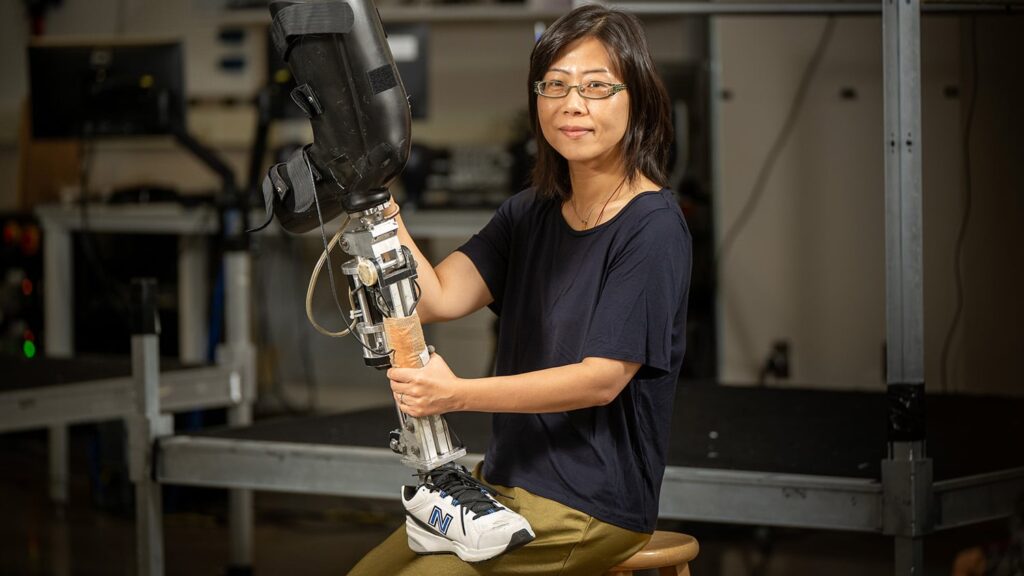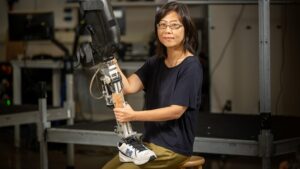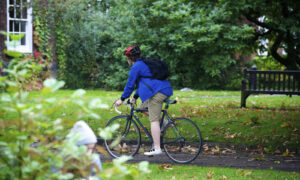
A team of researchers has developed a groundbreaking algorithm aimed at improving the functionality of robotic prosthetic devices. This innovative approach not only optimizes the movement of the prosthetic limb but also promotes a more natural walking pattern for users. The research addresses significant health challenges faced by amputees, particularly those affecting the hip and back.
Varun Nalam, co-lead author and assistant research professor at North Carolina State University and the University of North Carolina at Chapel Hill, emphasized the novelty of this algorithm. “This is the first algorithm that also holistically improves the physical behavior of the person interacting with those prosthetics,” he stated. Traditionally, existing algorithms have focused primarily on replicating the movement of the missing joint, often neglecting the broader implications of amputation on overall body mechanics.
The new algorithm builds upon previous advancements in prosthetic technology, specifically a system that utilized reinforcement learning to quickly tune powered prosthetic knees. According to Helen Huang, the senior author and the Jackson Family Distinguished Professor of Biomedical Engineering, the earlier system optimized prosthetic control but did not consider the user’s physical movement. The latest innovation incorporates inverse reinforcement learning, allowing for real-time adjustments based on both the prosthetic knee and the user’s natural hip movement.
Enhancing Mobility and Reducing Pain
By integrating sensors that monitor both the prosthetic knee and the user’s hip, the algorithm adapts the knee’s behavior to enhance the user’s natural movement. This dual focus aims not only to restore leg motion but also to alleviate common issues such as lower back pain and hip problems associated with above-knee amputations.
In a proof-of-concept study, the researchers tested the algorithm with five participants: two amputees and three individuals without amputations. Participants performed tasks using a robotic prosthetic knee under two conditions: one with the traditional control software and the other with the new combined algorithm. The results demonstrated a significant improvement in hip range of motion for all subjects, suggesting the algorithm enhances hip health and facilitates a more natural gait.
“The main finding here was that incorporating the new algorithm improved hip range of motion for all five subjects,” Nalam noted. “We also found that the new algorithm changed the gait of our study subjects in ways that indicate movement felt more natural for users.”
Future Directions and Collaboration
Looking ahead, the research team aims to collaborate with clinicians to evaluate the long-term effects of this technology on user well-being. They are also interested in partnering with companies that manufacture robotic prosthetics to explore practical applications of their findings.
From a research perspective, Nalam and his team are keen to investigate how this approach can address various human locomotive behaviors beyond hip movement. The study, titled “Addressing Human-Robot Symbiosis via Bilevel Optimization of Robotic Knee Prosthesis Control,” is published in the journal IEEE Transactions on Robotics.
This work received support from the National Science Foundation, under grants 2211739 and 2211740. Co-lead author Wentao Liu, a former Ph.D. student in the Lampe Joint Department of Biomedical Engineering, and co-corresponding author Jennie Si, a professor at Arizona State University, contributed significantly to this pioneering research.
The implications of this research extend beyond technology improvements; they hold the potential to transform the lives of many amputees, helping them regain not just mobility but also quality of life.






